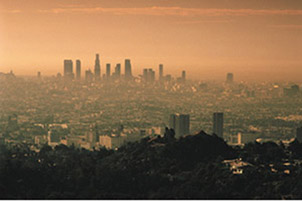Ozone peaks in urban areas during late afternoon.
Click on image for full size
Courtesy of UCAR
Ozone in the Troposphere
Did you know that ozone is found in two different layers of the atmosphere? You may have heard of the ozone hole problem - that is where ozone is missing in
the stratosphere (the 2nd layer of the Earth's atomsphere). But ozone is also found in the
troposphere, the first layer of the Earth’s atmosphere. In the troposphere, ozone is NOT wanted! It can actually do a lot of damage.
Driving cars and burning fossil fuels (like coal and oil) produces more ozone in that first layer of the atmosphere. This is what we call 'bad' ozone!
It is bad because ozone helps create smog or pollution that can be harmful to people, animals and even plants! When ozone pollution reaches high levels, pollution alerts are put out telling people with breathing problems to stay inside. That's no fun! Smog can damage lung tissues, impair an athlete's performance, increase attacks for people with asthma, and give people headaches.
Rubber, cloth and certain paints may be damaged by ozone. Some elastic materials can become brittle and crack (take a look at old rubber bands!).
How do we help get rid of all of this "bad" ozone? You can help every day by choosing to take the bus or walk to school. And maybe you could talk to your parents about buying a new hybrid car as their next car!
You might also be interested in:
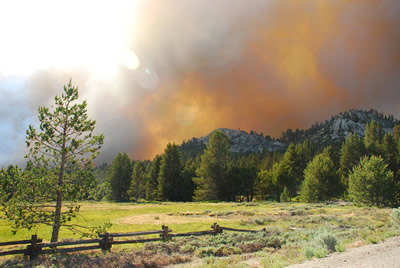
Scientists from the National Center of Atmospheric Research (NCAR) have published a new paper about how wildfires affect air pollution. They have learned that wildfires make ozone levels high enough to
...more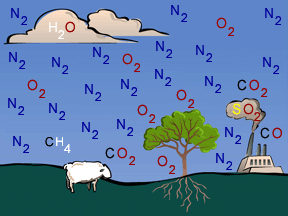
When you think of chemistry, do you think about mixing colored liquids in test tubes and maybe making an explosion... or at least a nice puff of smoke? Did you know that a lot of chemistry happens in Earth's
...more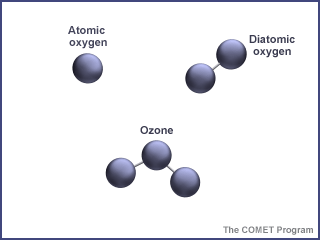
Ozone is a special kind of oxygen molecule. Normal oxygen molecules (O2), the kind we need to breathe, have two oxygen atoms. Ozone molecules (O3) have three oxygen atoms. Ozone forms when a photon of
...more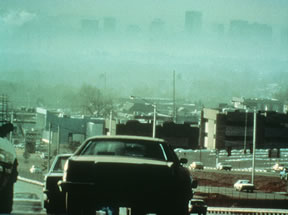
Volatile Organic Compounds are also called VOCs. They contain carbon and are a gas at room temperature.. There are many types of VOCs. Hydrocarbons have both hydrogen and carbon atoms. Oxygenates contain
...more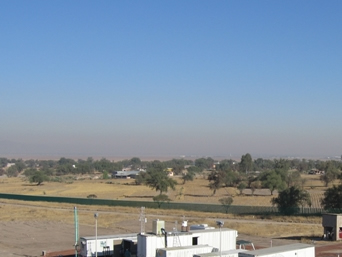
While most of the air in our atmosphere is made of nitrogen gas, there are other gases in our atmosphere that contain nitrogen too. They may make up only a small percentage of the air molecules in our
...more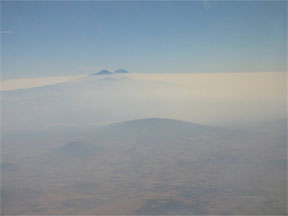
Have you ever heard of air pollution? Air pollution is not new. 700 years ago, when people started burning large amounts of coal 700 years ago in London, England, they complained about the dust and soot
...more
Rainbows appear in the sky when there is bright sunlight and rain. Sunlight is known as visible or white light and is actually a mixture of colors. The sun's rays pass through millions of raindrops. A
...more


